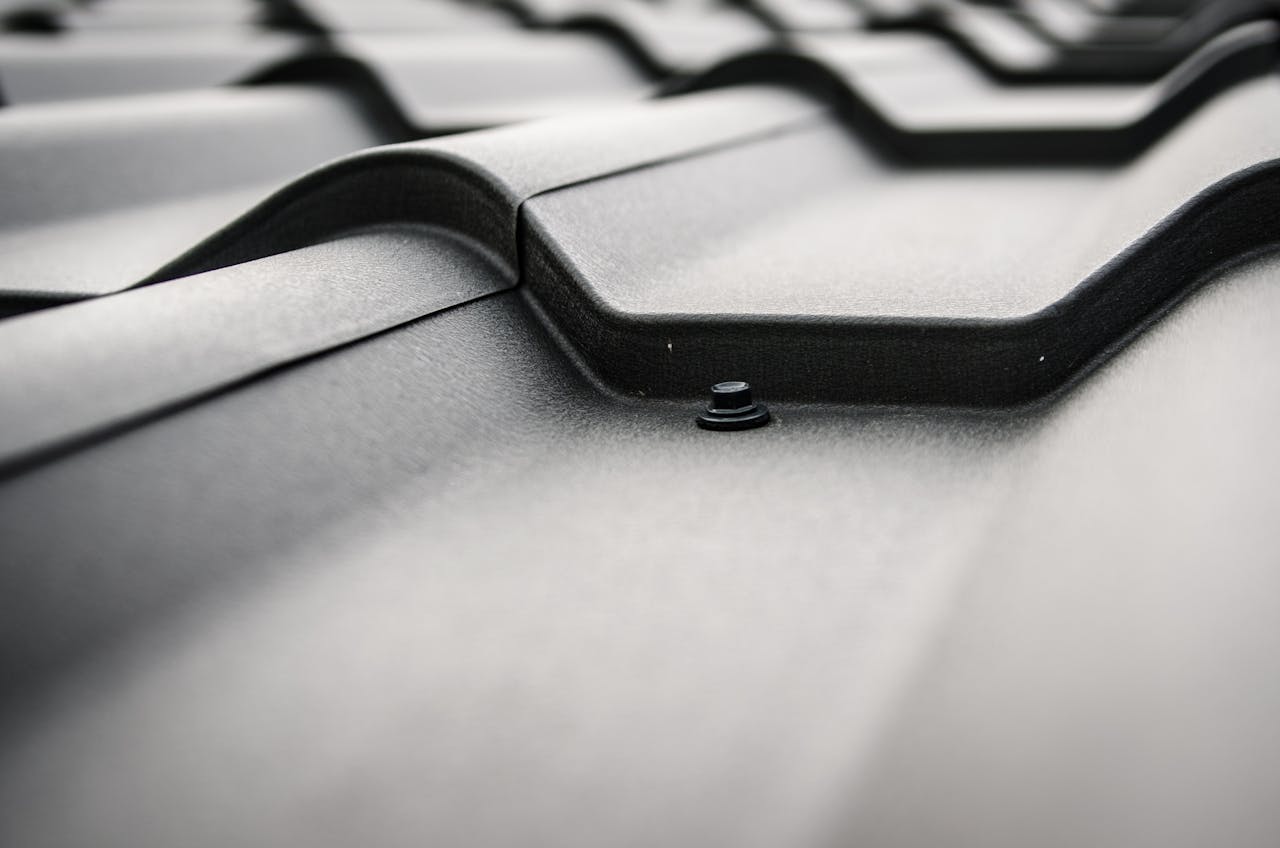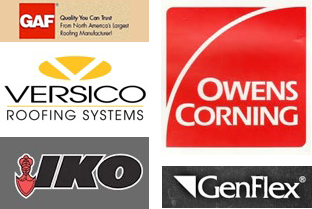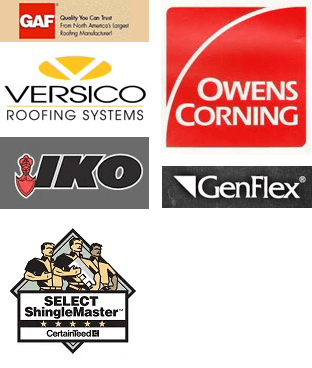
Maintaining a healthy roof is crucial for the overall well-being of your home. A roof acts as the first line of defense against the elements, protecting the structure of your house and everything inside it. However, like any other part of your home, a roof has a lifespan and will eventually need to be replaced. Recognizing the signs of roof deterioration early can save you from costly repairs and potential damage to your home.
Table of Contents
Key Takeaways
Why Roof Replacement is Important
10 Signs It’s Time for a Roof Replacement
1. Your Records Say So
2. It’s More Than 20 Years Old
3. A Licensed Contractor Recommends It
4. Your Attic Has Great Natural Light
5. Your Shingles Are Deteriorating or Missing
6. The Roof is Sagging or Drooping
7. You Have a Rooftop Garden (But You Didn’t Want One)
8. It Was Installed or Repaired Poorly
9. Your Flat Roof’s Seams Are Separating
10. Your Flat Roof is Torn, Heat-Damaged, or Has Pooling Water
Benefits of Timely Roof Replacement
Frequently Asked Questions
Schedule Your Roof Replacement with Morrissey Construction!
Key Takeaways✔ Maintaining a healthy roof is crucial for protecting your home from weather-related damage and increasing property value. ✔ Roof replacements are necessary when your roof shows signs of aging, such as curling or missing shingles, and when it’s over 20 years old. ✔ Licensed contractors’ recommendations and inspection reports are vital for determining the need for a roof replacement. ✔ Signs like natural light in the attic, sagging roofs, and unwanted vegetation indicate significant roof damage requiring replacement. ✔ Poor installation or repairs can lead to early roof failure, making quality workmanship essential for roof longevity. ✔ Flat roofs need special attention, especially for seam separation and water pooling, which can necessitate replacement. ✔ Timely roof replacement enhances home safety, energy efficiency, and market value, offering substantial long-term benefits. ✔ Environmental benefits include using sustainable materials and improving energy efficiency, reducing your home’s carbon footprint. |
Why Roof Replacement is Important
Ensuring your roof is in optimal condition is crucial for the overall health and longevity of your home. A timely roof replacement offers numerous benefits, from protecting your property to enhancing its value and efficiency.
Protecting Your Home
Your roof plays a vital role in shielding your home from harsh weather conditions such as rain, snow, wind, and extreme temperatures. A failing roof can lead to leaks, water damage, mold growth, and structural issues, jeopardizing the integrity of your home and the health of its occupants. Investing in a timely roof replacement can prevent these problems and protect your property.
Increasing Property Value
A new roof can significantly enhance your home’s curb appeal and market value. Prospective buyers are more likely to be attracted to a property with a recently replaced roof, as it indicates the home has been well-maintained and is less likely to require immediate repairs.
Energy Efficiency
Modern roofing materials and techniques are designed to improve energy efficiency. A new roof can provide better insulation, reduce heat transfer, and help maintain a comfortable indoor temperature, ultimately lowering your energy bills. By opting for a roof replacement, you can make your home more energy-efficient and environmentally friendly. For instance, cool roofing materials reflect more sunlight and absorb less heat, which can
10 Signs It’s Time for a Roof Replacement
Over time, even the most well-maintained roofs can show signs of wear and tear. Here are ten signs that it’s time for a roof replacement in Glastonbury, CT.
1. Your Records Say So
One of the simplest ways to determine if it’s time for a roof replacement is by reviewing your home maintenance records. These records should include information about previous roof repairs, inspections, and installations. If your roof has undergone multiple repairs or has reached the end of its estimated lifespan, it might be time for a replacement.
What to Look For
- Date of the Last Roof Installation: Knowing when your roof was last installed can give you a good indication of its remaining lifespan. Asphalt shingle roofs are the most popular choice due to their affordability and typical lifespan is 20 to 30 years.
- Frequency and Types of Repairs: Frequent repairs may indicate underlying issues that cannot be resolved by patching or minor fixes. Look for patterns in the types of repairs needed.
- Inspection Reports Indicating Wear and Tear: Professional inspection reports can provide detailed insights into the condition of your roof. Look for mentions of significant wear and tear or recurring issues.
2. It’s More Than 20 Years Old
The age of your roof is a significant factor in determining whether it’s time for a roof replacement. If your roof is over 20 years old, it may be nearing the end of its functional life.
Signs of Aging
- Curling or Buckling Shingles: Shingles that are curling or buckling are clear indicators of an aging roof. These shingles have likely lost their weatherproofing properties and can no longer protect your home effectively.
- Granule Loss on Asphalt Shingles: As shingles age, they lose granules, which can accumulate in gutters. These granules protect shingles from the sun’s harmful rays. Significant granule loss is a sign that your roof is deteriorating.
- Visible Wear and Tear: General signs of wear and tear, such as cracks, splits, or blistering, indicate that your roof is aging and may soon need to be replaced.
3. A Licensed Contractor Recommends It
Regular inspections by licensed roofing contractors in Glastonbury, CT, are essential for maintaining your roof’s health. Contractors can identify issues that may not be visible to the untrained eye and provide professional recommendations for repairs or replacements.
Common Findings
- Extensive Shingle Damage: Contractors can identify widespread shingle damage, such as cracking, curling, or missing shingles, which may not be immediately apparent to homeowners.
- Structural Issues: Professionals can detect underlying structural problems that may compromise the integrity of your roof, such as sagging or damage to the roof deck.
- Poor Insulation: Contractors can assess the effectiveness of your roof’s insulation. Poor insulation can lead to higher energy bills and decreased indoor comfort.
4. Your Attic Has Great Natural Light
Inspecting your attic can reveal significant signs of roof damage. If you notice natural light coming through the roof boards, it indicates that there are gaps or holes in your roof.
Potential Issues
- Water Leaks: Gaps or holes in the roof can allow water to seep into your attic, leading to water damage, mold growth, and potential structural issues.
- Increased Energy Bills: Holes in your roof can result in poor insulation, causing your heating and cooling systems to work harder and increasing your energy bills.
- Structural Damage: Prolonged exposure to the elements through gaps in the roof can weaken the roof structure and the home’s overall integrity.
5. Your Shingles Are Deteriorating or Missing
The condition of your shingles is a clear indicator of your roof’s health. Deteriorating or missing shingles can compromise your roof’s ability to protect your home from the elements.
Types of Shingle Damage
- Cracking: Shingles that are cracked can no longer provide a watertight seal, leading to leaks and water damage.
- Curling: Curling shingles indicate that the shingles are nearing the end of their lifespan and are no longer effective.
- Granule Loss: Granules protect shingles from UV rays. Granule loss can lead to shingle deterioration and reduce your roof’s lifespan.
6. The Roof is Sagging or Drooping
A sagging or drooping roof is a severe problem that indicates structural issues. This could result from prolonged water damage, weakened support structures, or the roof’s age.
Causes of Sagging
- Water Damage to the Roof Deck: The roof deck is the structural base for the roofing materials, usually made of plywood or oriented strand board (OSB). Prolonged exposure to water, often due to leaks or poor drainage, can cause the roof deck to absorb moisture. This moisture weakens the wood, making it soft and less supportive. Over time, the compromised integrity of the roof deck can lead to noticeable sagging.
- Poor Installation: When roofing materials are not installed correctly, it can result in inadequate support for the roof structure. Improper techniques during installation might include incorrect spacing of roof joists, using insufficient materials, or not following the manufacturer’s guidelines. Poor installation can create weak points in the roof’s structure, which may not be immediately apparent but will become problematic over time.
- Excessive Weight from Snow or Ice: In regions that experience heavy snowfall or ice storms, the accumulation of snow and ice can add significant weight to the roof. Most residential roofs are designed to handle typical loads, but unusually heavy or prolonged accumulation can exceed the roof’s load-bearing capacity.
7. You Have a Rooftop Garden (But You Didn’t Want One)
The presence of moss, algae, or other vegetation on your roof can cause significant damage over time. These growths can trap moisture, leading to rot and deterioration of your roofing materials.
Prevention and Removal
- Regular Cleaning and Maintenance: Regularly cleaning your roof can prevent the growth of moss and algae. Use a mild cleaning solution and a soft brush to remove vegetation.
- Installing Zinc or Copper Strips: These metals naturally inhibit the growth of moss and algae. Installing strips along the roof ridge can help keep your roof clean.
- Ensuring Proper Drainage: Proper drainage systems can prevent water accumulation, reducing the likelihood of vegetation growth.
8. It Was Installed or Repaired Poorly
The quality of your roof’s installation plays a crucial role in its longevity and performance. Poor installation or substandard repairs can lead to premature roof failure.
Signs of Poor Workmanship
- Improperly Aligned Shingles: Shingles that are not aligned correctly can allow water to penetrate the roof, leading to leaks and damage.
- Insufficient Flashing: Flashing is used to seal joints and prevent water infiltration. Insufficient or improperly installed flashing can lead to leaks and water damage.
- Visible Nail Heads: Exposed nail heads can rust and deteriorate, creating entry points for water and compromising the roof’s integrity.
9. Your Flat Roof’s Seams Are Separating
Flat roofs present unique maintenance challenges, and one common problem is the separation of seams. This can allow water to penetrate the roof, leading to leaks and damage.
Common Problems
- Seam Separation: Seam separation is one of the most prevalent problems in flat roofing systems. Flat roofs are often covered with large sheets of roofing material, such as EPDM, TPO, or modified bitumen, which are seamed together. Over time, these seams can start to separate due to various factors.
- Blistering: Blistering is another common issue with flat roofs. It occurs when pockets of air or moisture become trapped under the roofing material, causing bubbles or blisters to form on the surface.
- Punctures: Flat roofs are more susceptible to punctures due to their accessibility and lack of slope. Punctures can result from various sources, including foot traffic and falling debris.
10. Your Flat Roof is Torn, Heat-Damaged, or Has Pooling Water
Flat roofs are susceptible to various types of damage, including tears, heat damage, and pooling water. These issues can compromise the roof’s integrity and lead to leaks.
Types of Damage
- Tears from Foot Traffic or Debris: Flat roofs are more prone to tears from foot traffic or falling debris. Regularly inspecting your roof and addressing any damage promptly can prevent further issues.
- Heat Damage Causing Material Degradation: Flat roofs are often exposed to extreme temperatures. Prolonged exposure to heat can cause the roofing material to degrade and become brittle.
- Pooling Water Leading to Leaks and Structural Issues: Flat roofs must have proper drainage to prevent water accumulation. Pooling water can lead to leaks, structural damage, and reduced roof lifespan.
Benefits of Timely Roof Replacement
Replacing your roof at the right time offers numerous advantages, ensuring your home remains safe, energy-efficient, and valuable.
Peace of Mind
One of the most significant benefits of a roof replacement is the peace of mind it brings. Knowing that your roof is in excellent condition and capable of protecting your home from the elements allows you to rest easily, especially during severe weather conditions.
- Durability: Modern roofing materials are designed to be more durable and long-lasting, providing better protection against harsh weather.
- Warranty: Many new roofing systems come with warranties that cover materials and workmanship, giving you added security and protection.
Reduced Maintenance Costs
An old or damaged roof often requires frequent repairs and maintenance, which can add up over time. A roof replacement can help you avoid these recurring expenses by providing a new, durable roofing system that requires minimal maintenance.
- Lower Repair Costs: A new roof is less likely to develop problems, reducing the need for costly repairs.
- Minimal Maintenance: Modern roofing materials are designed to be low-maintenance, saving you time and money in the long run.
Environmental Benefits
Opting for a roof replacement can also have environmental benefits. Many modern roofing materials are designed to be environmentally friendly, offering better energy efficiency and reducing the overall carbon footprint of your home.
- Sustainable Materials: Choose roofing materials that are made from recycled or sustainable resources to minimize environmental impact.
- Energy Efficiency: As mentioned earlier, improved insulation and reflective coatings can reduce energy consumption, making your home more eco-friendly.
Higher Resale Value
Investing in a roof replacement can increase the resale value of your home, providing a higher return on investment when it comes time to sell.
- Market Competitiveness: Homes with new roofs are often more competitive in the real estate market, attracting more potential buyers.
- Investment Protection: A new roof protects the structural integrity of your home, preserving its value over time.
Enhanced Curb Appeal
A new roof can dramatically improve the appearance of your home, boosting its curb appeal and making it stand out in your neighborhood.
- Aesthetic Appeal: Modern roofing materials come in a variety of styles and colors, allowing you to choose a look that complements your home’s architecture.
- First Impressions: A new roof can create a positive first impression, making your home more appealing to prospective buyers.
Frequently Asked Questions
What is the best time of year to replace a roof?
The best time to replace a roof is typically in the spring or fall when the weather is mild. These seasons offer optimal conditions for roofing work, avoiding the extreme heat of summer and the cold and snow of winter.
How long does a roof replacement take?
The duration of a roof replacement depends on the size and complexity of the roof, but on average, it takes about 1 to 3 days. Factors such as weather conditions, roof size, and the type of materials used can influence the timeline.
Can you live in your house while the roof is being replaced?
Yes, you can usually stay in your home during a roof replacement. However, it may be noisy and disruptive, so some homeowners choose to stay elsewhere temporarily, especially if they work from home or have small children or pets.
How much does a roof replacement cost on average?
The cost of a roof replacement varies widely based on factors such as roof size, materials used, and labor rates in your area. On average, homeowners can expect to pay between $5,000 and $10,000 for a standard asphalt shingle roof replacement.
How can I finance a roof replacement?
There are several options for financing a roof replacement, including home equity loans, personal loans, and financing plans offered by roofing contractors. Some homeowners also use credit cards or savings to cover the costs.
Schedule Your Roof Replacement with Morrissey Construction!
If you’re noticing any of these signs and think it’s time for a roof replacement, don’t wait until it’s too late. Our team is dedicated to providing high-quality roof replacement services to ensure your home is protected, energy-efficient, and valuable. Contact Morrissey Construction, the trusted roofing experts in Glastonbury, CT. Your home deserves the best – call us now!


